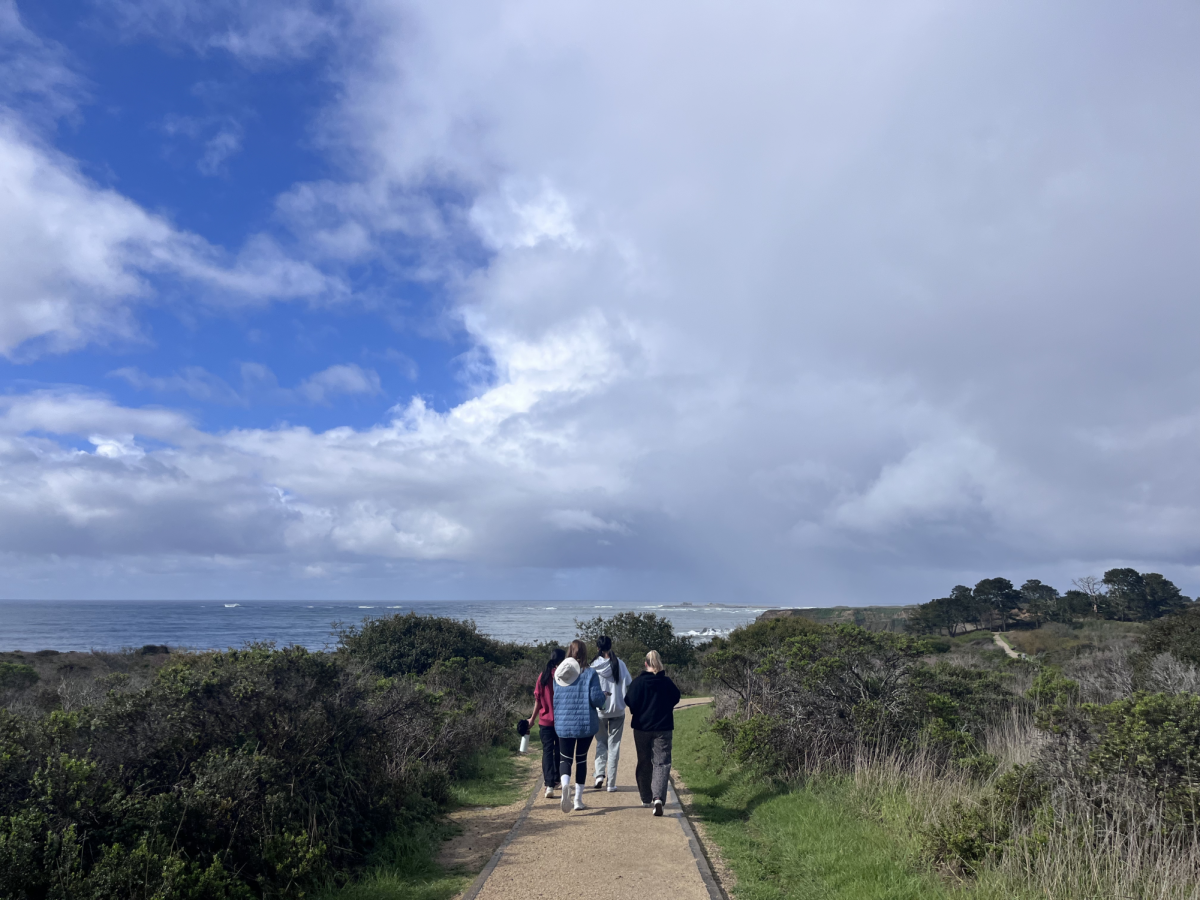In September, the school changed parts and pieces of its landscaping as an effort to shift toward a more climate-friendly model.
According to assistant principal Matt Torrens, workers removed two large trees in the quad due to sickness. They haven’t been replaced because of their high water consumption.
Workers also pruned overgrown trees that were dropping debris on the roof, clogging drains and flooding areas of the campus.
Weeds have consistently been a concern on campus, because they reproduce quickly and compete with native species for key resources like water, nutrients, and space. In recent weeks, maintenance supervisor Henry Arellanes brought in a team to remove many weeds around campus.
Gardening club initiatives
The school’s efforts also have student support. One group, the Gardening for All Students Club (GFAS), has been working over the last few years to reduce their water usage on campus. Primarily, they’ve done this by watering their plants by hand.
“We stay very conscious about how much water we’re using to maintain the garden,” senior GFAS president Manlin Zhang said.

The SHS Garden’s location is by the ASSIST building.
The main garden is located next to the ASSIST building and the Ceramics classroom’s back door. Zhang said the club hopes to expand room for raised beds around campus in the future, though such beds are costly to build. Additionally, the school doesn’t have water outlets for drip irrigation readily available all across campus, and they would need to be installed for new raised beds to be successful, according to Zhang.
In 2022, the club introduced native species like the California poppy, which can thrive autonomously without added resources or care, to their garden. The garden’s Goldenberry plant, which has been around for several years, also requires minimal water usage. The club has been taking care of the garden since 2021, and the garden was previously managed by the ASSIST program, and before then, the maintenance staff.

The many varieties of seeds that the club receives from the SeedSaver community grant.
Some of the fruit species the club grows include yellow passion fruit, heritage raspberry, thornless blackberries and burgundy plum. The club has historically had access to the SeedSaver community grant, which gave them access to over 75 heritage species cultivated by generations of local Americans to plant.
Besides their expansion efforts within SHS, the Gardening Club has also taken inspiration from their time spent taking care of the Redwood Middle School garden and doing outreach during the school’s annual SMASH event on Nov. 1, which will showcase STEM activities. At SMASH, they plan to be engaged with over 100 elementary schoolers and give out take-home mystery plants the families can grow at home in cups.
“We’re looking forward to expanding the variety of plant life in our garden this year, and presenting at green-focused community events like SMASH,” Zhang said.




























